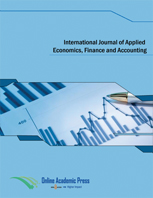Non-Performing Loans in Banking Sector of Bangladesh: An Evaluation
DOI:
https://doi.org/10.33094/8.2017.2020.61.22.29Keywords:
Banking industry, Non-performing loans, Ratio analysis, Credit control, MDGs, State-owned commercial banks.Abstract
Non-performing loan is a loan that is in default or close to being in default. Non-performing loans (NPLs) badly affects the health of banking sector and also economy of the nations. The main aim of this paper is to analyze the recent trend of NPLs in banking sector with reference to Bangladesh. The present study is based on the secondary data which have been collected from the report of Bangladesh Bank and websites of the scheduled banks of Bangladesh from the year 2003 to 2018. The study revealed that NPLs are the burning problems of the banking sector in Bangladesh for last few decades. The international standard of NPL is 2 percent or below but in our country it is much higher. The NPL percentages in Bangladesh are 5 to 6 times higher than the standard which is alarming for the sector. According to the reports of Bangladesh Bank (central bank of Bangladesh) Non Performing Loans ratio stood at 10.30 % in December 2018, 9.31 percent in December 2017, 9.23 percent in December 2016 and 8.79 percent in December 2015. It is observed that the NPL ratio is growing successively with the passage of time. So, as a credit controlling authority Bangladesh Bank should give more emphasize on the NPLs of commercial banks.




